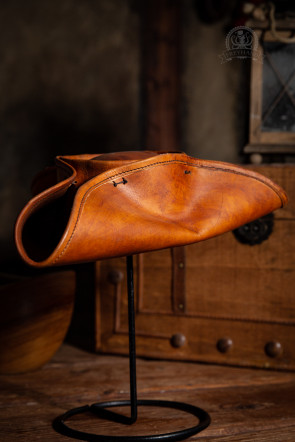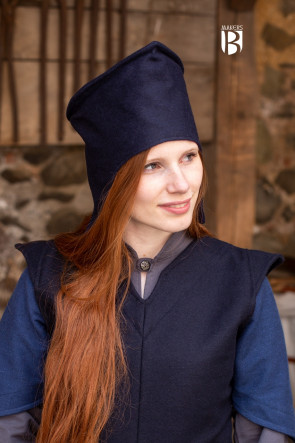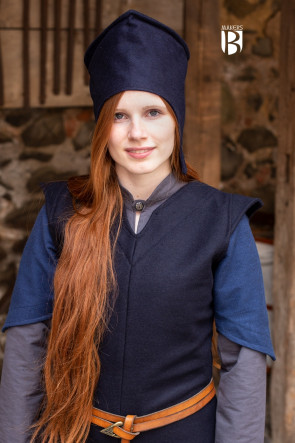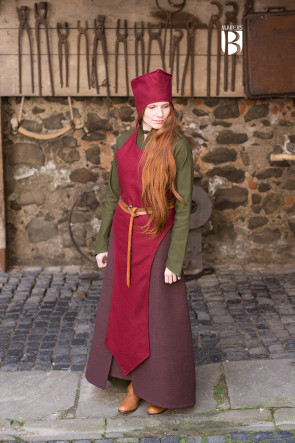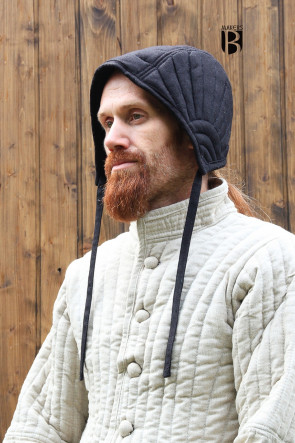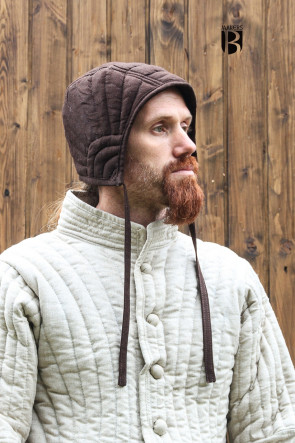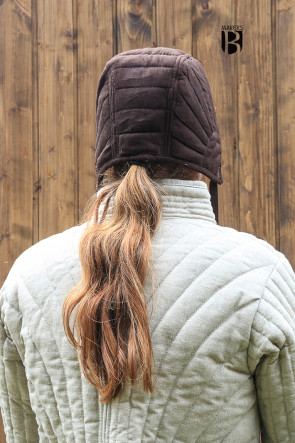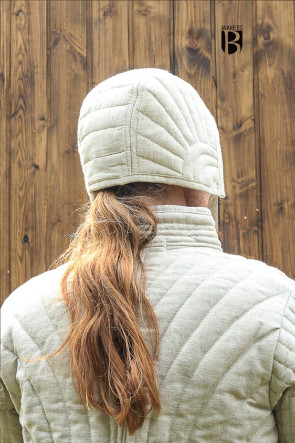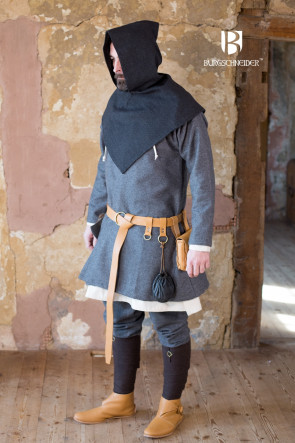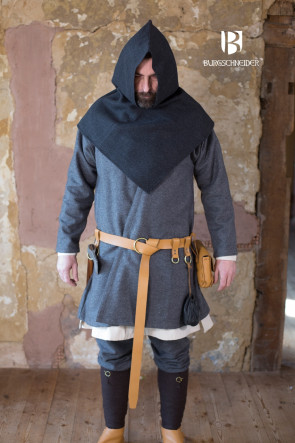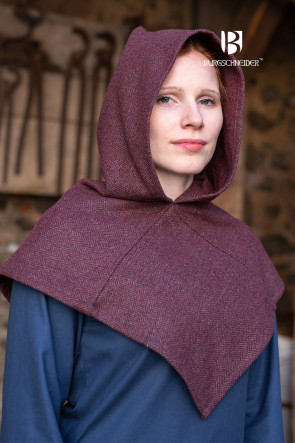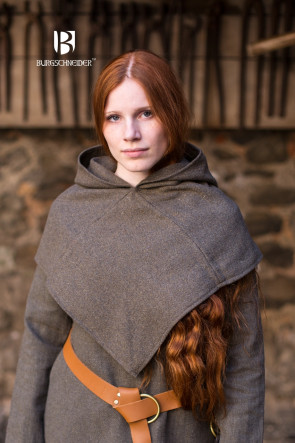Headgear

-
Leather Hat Tricorne - Brown
Our tricorne hat is a must for any aspiring musketeers, pirates or 18th century soldiers. As the name suggests, this hat is folded in in three places with a circular top for a particularly commanding look. At the peak of its popularity in the 18th century, the tricorne hat was worn by aristocrats, military professionals, and even found its way into common civilian dress.
Learn More
Color: Light Brown
- Made from vegan cow leather for an authentic look and sturdy quality
- Available in light brown, dark brown, and black
- Available in sizes S, M, or L$174.99 -
Leather Hat Tricorne - Dark Brown
Our tricorne hat is a must for any aspiring musketeers, pirates or 18th century soldiers. As the name suggests, this hat is folded in in three places with a circular top for a particularly commanding look. At the peak of its popularity in the 18th century, the tricorne hat was worn by aristocrats, military professionals, and even found its way into common civilian dress.
Learn More
Color: Dark Brown
- Made from vegan cow leather for an authentic look and sturdy quality
- Available in light brown, dark brown, and black
- Available in sizes S, M, or L$174.99 -
Magician's Chapeau Adis - Wool Blue
- Material: Wool Blend
- Genre: Fictional
- Sizes: XS - L
- Maker: Lena Krause
$23.99 -
Magician's Chapeau Adis - Wool Red
- Material: Wool Blend
- Genre: Fictional
- Sizes: XS - L
- Maker: Lena Krause
$23.99 -
$24.99
-
$24.99
-
$24.99
-
Skjoldehamn Gugel Knud Herringbone - Black/Grey
The Skjoldehamn Cowl was discovered in a pagan grave from the first half of the 11th century. This is one of the first examples of the headgear "Gugel" itself.
Learn More
The hood has a basic square shape, characteristically the wide brim ends with a corner on the chest.
The grave find from Skjoldehamn raised many questions since its recovery in 1936 and still occupies today. According to current research, the dating of the pagan grave in the marshland is the first half of the 11th century. The hood of the gugel from Skjoldehamn has a simple square basic shape and a very wide brim which does not fall round but with a corner on the chest. This gugel is also a very early example of the type of headgear that became a ubiquitous garment in Europe during the Middle Ages.
In the course of research, attempts were made to assign the garment to a gender and cultural group. For this purpose, not only the DNA of the buried person was examined more closely but also the additional finds. The enclosed trousers determined the theory of the researchers that the person must have been male. DNA examination in 1999 showed no Y chromosome present in the bones which supported the theory that it had to be a woman instead. However, this methodology is considered outdated.
The question of culture points to Norway. This is assumed by ornamentation and morphological features which suggest that the buried person was a Sami tribal member. Further research is needed, as some key evidence for these hypotheses is still lacking. More modern DNA analysis and research into the history of the fashions of the various Sami groups will shed light on this.$45.99 -
Skjoldehamn Gugel Knud Herringbone - Burgundy/Grey
The Skjoldehamn Cowl was discovered in a pagan grave from the first half of the 11th century. This is one of the first examples of the headgear "Gugel" itself.
Learn More
The hood has a basic square shape, characteristically the wide brim ends with a corner on the chest.
The grave find from Skjoldehamn raised many questions since its recovery in 1936 and still occupies today. According to current research, the dating of the pagan grave in the marshland is the first half of the 11th century. The hood of the gugel from Skjoldehamn has a simple square basic shape and a very wide brim which does not fall round but with a corner on the chest. This gugel is also a very early example of the type of headgear that became a ubiquitous garment in Europe during the Middle Ages.
In the course of research, attempts were made to assign the garment to a gender and cultural group. For this purpose, not only the DNA of the buried person was examined more closely but also the additional finds. The enclosed trousers determined the theory of the researchers that the person must have been male. DNA examination in 1999 showed no Y chromosome present in the bones which supported the theory that it had to be a woman instead. However, this methodology is considered outdated.
The question of culture points to Norway. This is assumed by ornamentation and morphological features which suggest that the buried person was a Sami tribal member. Further research is needed, as some key evidence for these hypotheses is still lacking. More modern DNA analysis and research into the history of the fashions of the various Sami groups will shed light on this.$45.99 -
Skjoldehamn Gugel Knud Herringbone - Olive/Grey
The Skjoldehamn Cowl was discovered in a pagan grave from the first half of the 11th century. This is one of the first examples of the headgear "Gugel" itself.
Learn More
The hood has a basic square shape, characteristically the wide brim ends with a corner on the chest.
The grave find from Skjoldehamn raised many questions since its recovery in 1936 and still occupies today. According to current research, the dating of the pagan grave in the marshland is the first half of the 11th century. The hood of the gugel from Skjoldehamn has a simple square basic shape and a very wide brim which does not fall round but with a corner on the chest. This gugel is also a very early example of the type of headgear that became a ubiquitous garment in Europe during the Middle Ages.
In the course of research, attempts were made to assign the garment to a gender and cultural group. For this purpose, not only the DNA of the buried person was examined more closely but also the additional finds. The enclosed trousers determined the theory of the researchers that the person must have been male. DNA examination in 1999 showed no Y chromosome present in the bones which supported the theory that it had to be a woman instead. However, this methodology is considered outdated.
The question of culture points to Norway. This is assumed by ornamentation and morphological features which suggest that the buried person was a Sami tribal member. Further research is needed, as some key evidence for these hypotheses is still lacking. More modern DNA analysis and research into the history of the fashions of the various Sami groups will shed light on this.$45.99







